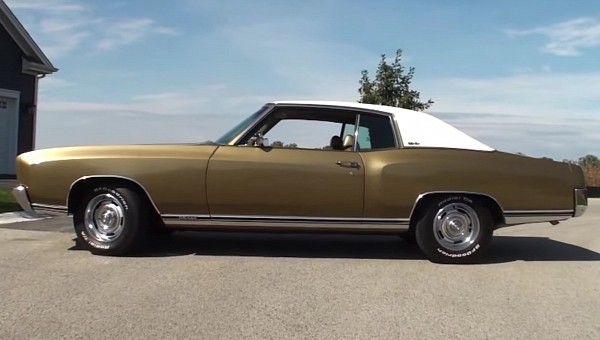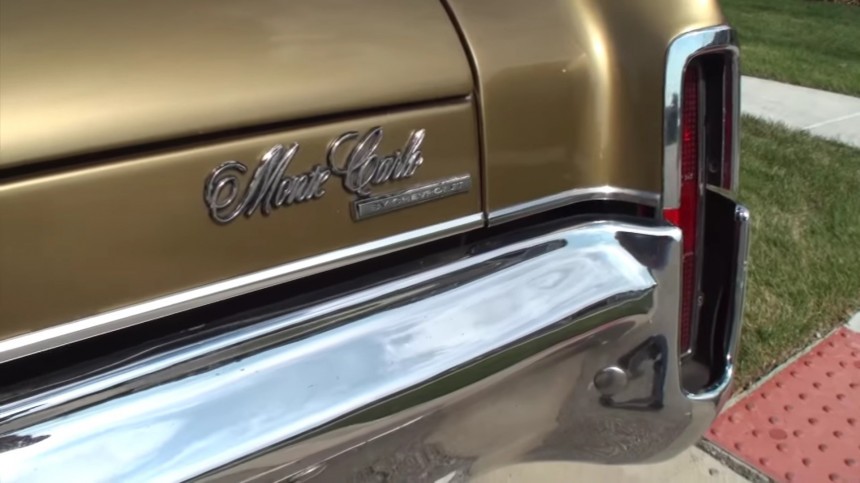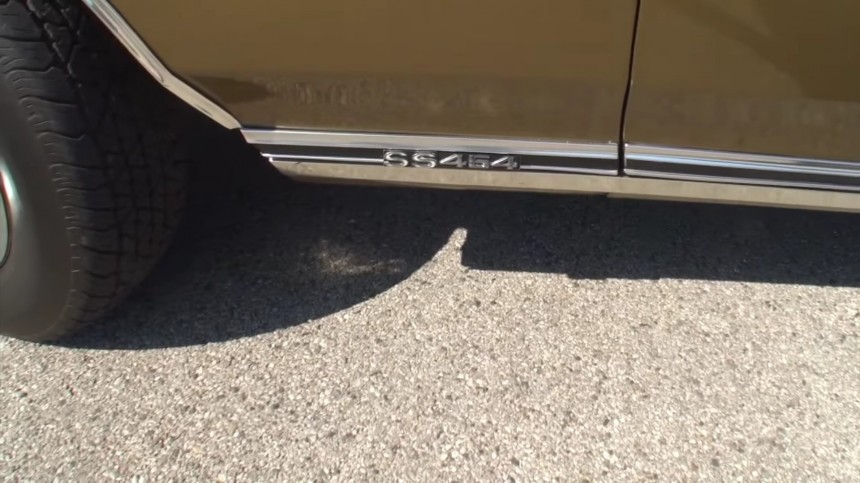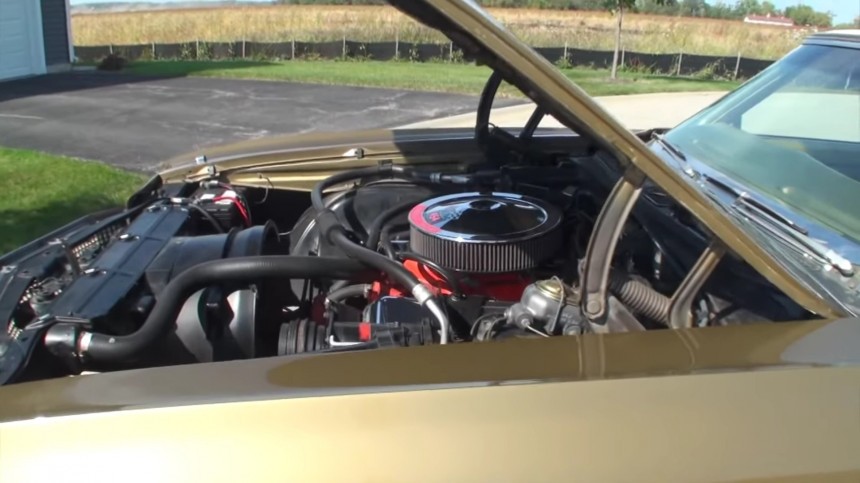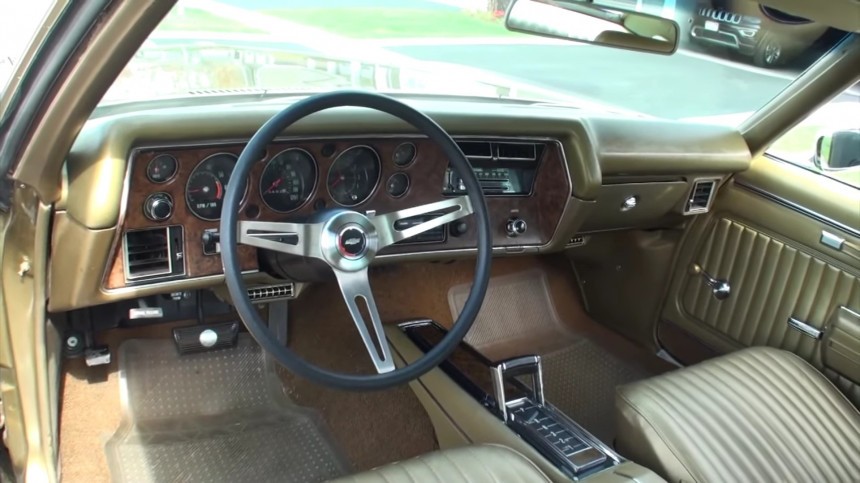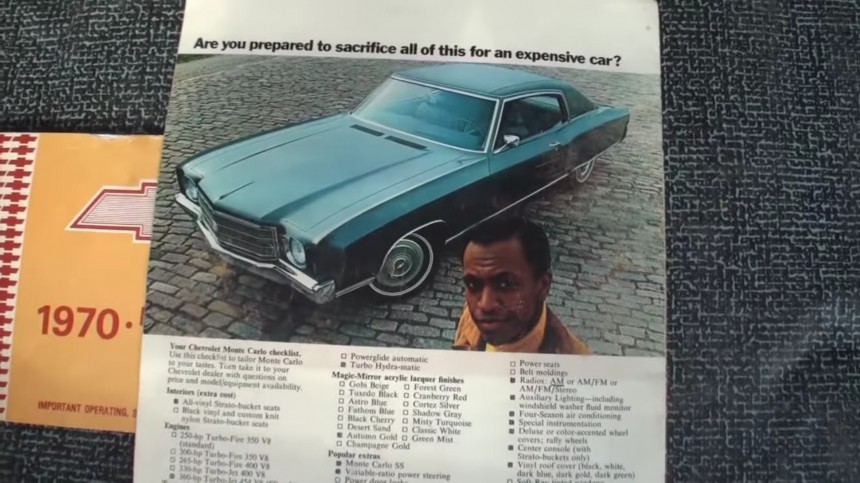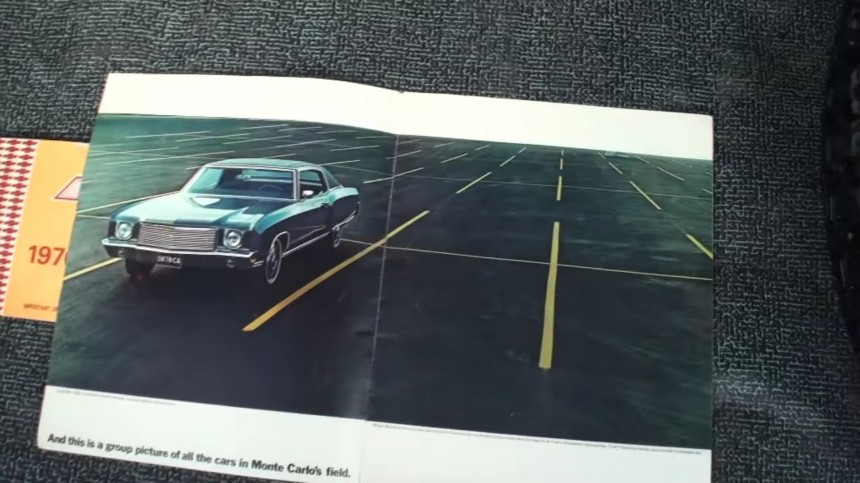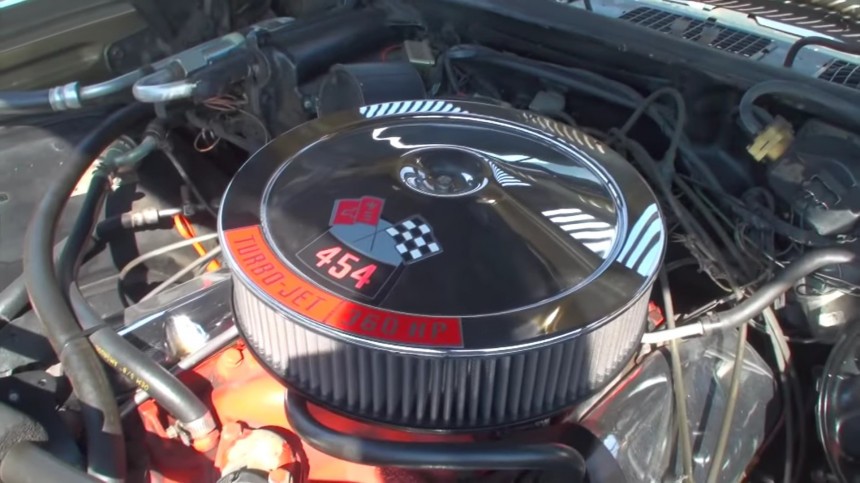"If you care for Monte Carlo the way many people care for other fine cars, and practice the normal preventive maintenance recommendations as prescribed in the owner's manual, years of ownership could run well into double figures." (Chevrolet Motor Division, September, 1969)
General Motors, if only you'd known back in September 1969 how prophetic these words would be! This article features a 1970 Chevrolet Monte Carlo – the nice one, the 454 SS. Found by the classics-addict YouTubing Lou Costabile in the suburbs of Chicago, Illinois, the 53-year-old Chevy could shame any featherweight, bullet-fast, Star-Wars-age tech hypercar of today.
Not through extreme performance, obviously, but with sheer presence and, most importantly, history, the Monte Carlo was a pivotal point for GM at the beginning of the eighth decade of the twentieth century. The SS was a rare gem at the height of the Golden Era in the early 70s.
After being the undisputed pharaoh of the automotive realm for forty years straight, dominating the U.S. market with an iron fist, GM's throne was beginning to shake under the corporation's own weight. A change was needed, badly and quickly.
John DeLorean (the DMC-12-Back-to-the-Future-Flying-Car-DeLorean) took an old idea, put a new twist on it, and came up with a breakthrough. GM was to make – and sell – a personal luxury automobile, the corporation's first.
Now, hold on to your cylinder heads covers for a moment, and let's review that statement again. A personal luxury car made by GM. Where and when have we heard about that Michigan idea? The answer lies almost two decades before.
In 1953, GM introduced the Corvette – America's first sportscar. Ford clenched his fists, teeth grinding and all, and mumbled a few words toward Chevrolet but submitted to this temporary defeat. In retaliation, FoMoCo launched the "personal luxury car" in 1957, the Thunderbird.
GM didn't react immediately and waited for 13 years before staging a come-back in the segment created (and dominated in sales) by the T-Bird. The answer was the Chevrolet Monte Carlo, a car with a big posture, big promises, big hood, big hopes, and big ambitions.
The then-new Chevy model was launched on September 18, 1969. The exact date is paramount, as one week later, on September 24, workers from the Fisher Body Plant 2 went on strike. Coincidentally, the Monte Carlo bodies were built by Fisher, and the strike hit hard (pun accidentally appropriate).
Because the union members refused to work, the Monte Carlo – introduced with grand pomp – didn't get the best start in life. The longest strike in U.S. carmaking history (lasting for 136 days) hindered the car's deliveries until February of 1970, when full-scale production was reached.
As a result, revenue-making figures were not spectacular – at least, not in the first years. Even so, the model accounted for a respectable portion of GM's Chevrolet division's sales. In 1970, one in ten Chevys would be a Monte Carlo. But the hero of our story is a member of a much more exclusive club: the SS 454.
SuperSport 454 cubic-inch engine displacement is the meaning of the acronym. That made the "personal luxury" claim (which, by its own definition, ruled out any "muscle car" affiliation) obsolete. After all, a 7.4-liter V8 from 1970 (and from Chevrolet) was no sewing machine.
The quintessentially American-worshipped piston architecture was the only offer in this personal luxury Chevy. Nothing but V8s, ranging from 350 CID (5.7 liters) to the behemoth 454 (7.4 liters). Add a three-speed heavy-duty Turbo Hydramatic and a 3:31 Positraction differential, consider the four-barrel carb, and burn the "personal luxury" emblem at stake.
The SS 454 wasn't just a white jacket, black bow-tie posh automobile. In the Monte Carlo, the big-block was good for 360 hp (365 PS) and 380 lb-ft (515 Nm) of crank spin. A respectable figure, even if the engine wasn't the infamous LS6 that erupted under the hood of certain Chevelles from the same year.
For trivia's sake, that monster would cure the GM out of the Corvette, with its 450 hp and the 500 lb-ft of torque (456 PS / 678 Nm). It was the corporation's only exception to the "nothing outpowers the 'Vette" constitutional amendment.
Back to our Monte Carlo – it did not outpower the Corvette, but it did give it a quarter-mile LS5-powered kick in the exhaust pipe. The 454 SS "gentlemen's car" (GM's definition) finished the 1,320-foot-long sporting event ahead of the pure-blooded sportscar.
By a tenth of a second, but does it matter? The helipad-hooded "luxury" car was a better sportscar than America's Sportscar, making the Monte Carlo an increasingly preferred automobile in the years to come.
Not just by the buying public, which gradually increased the model's sales figures – and GM's market share – in the seventies, but also by NASCAR. The Monte Carlo quickly rose above anyone else in the field thanks to a few mechanical improvements.
Or, as General Motors marketed it in the user manual for the 1970 Chevrolet Monte Carlo, it stood alone. Take a peak in the gallery and see the visual interpretation of this statement. And, if we look at the car in the video, we can see why that wasn't a bluff call.
All original from the front fender to the rear "by Chevrolet" badge, the car is a beautiful Autumn Gold hue in and out. The "luxury" hint is strong in this particular example. Yet the actual addiction comes from under that 69-inch hood (1,75 meters) – the biggest ever to sport the Chevrolet badge.
3,823 SS 454s were built in the first production year of the car's first generation (1970-1972). Only in '70 and '71 did the knight crest on the front grille have the model year written in Roman numerals. Speaking of the grille – 720 square holes let air enter the engine bay to feed the insatiable two-gallons-of-displacement oil burner.
With this MOAB (Mother Of All Big-Blocks) cataclysm, the SS 454 could top the quarter mile in 14.4 seconds. For a 1,744 kg / 3,845 lbs. notchback coupe with the air drag efficiency of a barn, that's a pretty good time. And the 0-60 mph (0-97 kph) time of just under seven seconds was a welcomed ego-tickling performance.
Also, the goodies inside signaled a high-rank promotion from the "true" Chevy muscle cars lackluster: rear defogger, variable-speed windshield wipers – computer-controlled and tip-of-the-finger actuated, via the pushbutton on the turn signal stick, variable power steering, or Superlift self-leveling rear air suspension.
The list went on with other small but attractive details – like the radio antenna concealed in the windshield, the electric trunk opening from inside the cabin, or the lights malfunctioning warning system.
This ingenious gadget consisted of fiber optic cables between outside lights and monitors on the front fenders and rear windshield tray. The warning light turned on when a running bulb (head, turn, or parking) went out. The 1970 Monte Carlo was the last Chevrolet to have this feature; subsequent models didn't offer it anymore.
The price range for a Monte Carlo of the first year started at $3,125, but a fully loaded SS would add two grand to that fistful of dollars. This might partially explain the low production figures for the most athletic variant, which only makes this particular car in our story all the more interesting.
Not through extreme performance, obviously, but with sheer presence and, most importantly, history, the Monte Carlo was a pivotal point for GM at the beginning of the eighth decade of the twentieth century. The SS was a rare gem at the height of the Golden Era in the early 70s.
After being the undisputed pharaoh of the automotive realm for forty years straight, dominating the U.S. market with an iron fist, GM's throne was beginning to shake under the corporation's own weight. A change was needed, badly and quickly.
Now, hold on to your cylinder heads covers for a moment, and let's review that statement again. A personal luxury car made by GM. Where and when have we heard about that Michigan idea? The answer lies almost two decades before.
In 1953, GM introduced the Corvette – America's first sportscar. Ford clenched his fists, teeth grinding and all, and mumbled a few words toward Chevrolet but submitted to this temporary defeat. In retaliation, FoMoCo launched the "personal luxury car" in 1957, the Thunderbird.
The then-new Chevy model was launched on September 18, 1969. The exact date is paramount, as one week later, on September 24, workers from the Fisher Body Plant 2 went on strike. Coincidentally, the Monte Carlo bodies were built by Fisher, and the strike hit hard (pun accidentally appropriate).
Because the union members refused to work, the Monte Carlo – introduced with grand pomp – didn't get the best start in life. The longest strike in U.S. carmaking history (lasting for 136 days) hindered the car's deliveries until February of 1970, when full-scale production was reached.
SuperSport 454 cubic-inch engine displacement is the meaning of the acronym. That made the "personal luxury" claim (which, by its own definition, ruled out any "muscle car" affiliation) obsolete. After all, a 7.4-liter V8 from 1970 (and from Chevrolet) was no sewing machine.
The quintessentially American-worshipped piston architecture was the only offer in this personal luxury Chevy. Nothing but V8s, ranging from 350 CID (5.7 liters) to the behemoth 454 (7.4 liters). Add a three-speed heavy-duty Turbo Hydramatic and a 3:31 Positraction differential, consider the four-barrel carb, and burn the "personal luxury" emblem at stake.
For trivia's sake, that monster would cure the GM out of the Corvette, with its 450 hp and the 500 lb-ft of torque (456 PS / 678 Nm). It was the corporation's only exception to the "nothing outpowers the 'Vette" constitutional amendment.
Back to our Monte Carlo – it did not outpower the Corvette, but it did give it a quarter-mile LS5-powered kick in the exhaust pipe. The 454 SS "gentlemen's car" (GM's definition) finished the 1,320-foot-long sporting event ahead of the pure-blooded sportscar.
Not just by the buying public, which gradually increased the model's sales figures – and GM's market share – in the seventies, but also by NASCAR. The Monte Carlo quickly rose above anyone else in the field thanks to a few mechanical improvements.
Or, as General Motors marketed it in the user manual for the 1970 Chevrolet Monte Carlo, it stood alone. Take a peak in the gallery and see the visual interpretation of this statement. And, if we look at the car in the video, we can see why that wasn't a bluff call.
3,823 SS 454s were built in the first production year of the car's first generation (1970-1972). Only in '70 and '71 did the knight crest on the front grille have the model year written in Roman numerals. Speaking of the grille – 720 square holes let air enter the engine bay to feed the insatiable two-gallons-of-displacement oil burner.
With this MOAB (Mother Of All Big-Blocks) cataclysm, the SS 454 could top the quarter mile in 14.4 seconds. For a 1,744 kg / 3,845 lbs. notchback coupe with the air drag efficiency of a barn, that's a pretty good time. And the 0-60 mph (0-97 kph) time of just under seven seconds was a welcomed ego-tickling performance.
The list went on with other small but attractive details – like the radio antenna concealed in the windshield, the electric trunk opening from inside the cabin, or the lights malfunctioning warning system.
This ingenious gadget consisted of fiber optic cables between outside lights and monitors on the front fenders and rear windshield tray. The warning light turned on when a running bulb (head, turn, or parking) went out. The 1970 Monte Carlo was the last Chevrolet to have this feature; subsequent models didn't offer it anymore.
The price range for a Monte Carlo of the first year started at $3,125, but a fully loaded SS would add two grand to that fistful of dollars. This might partially explain the low production figures for the most athletic variant, which only makes this particular car in our story all the more interesting.
